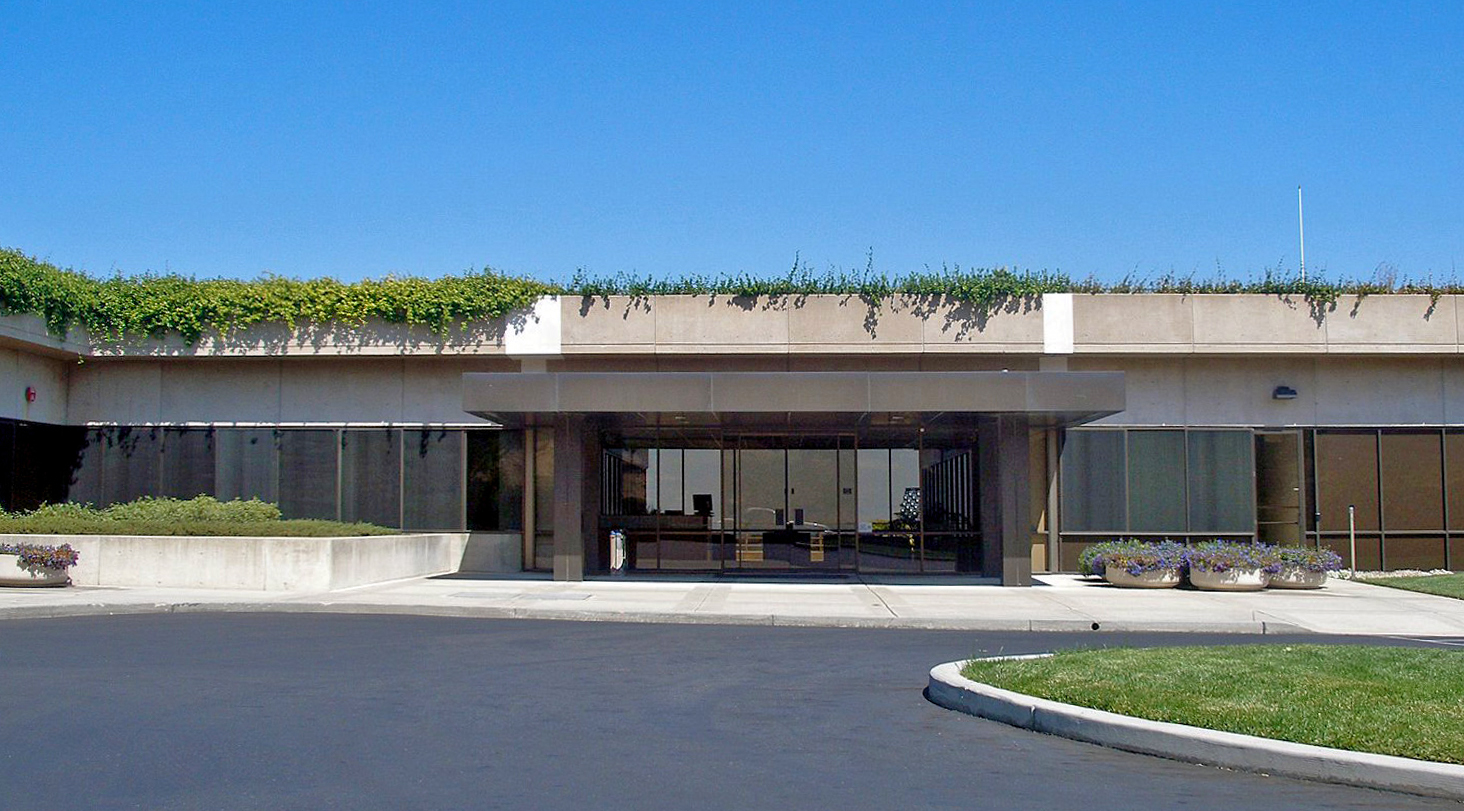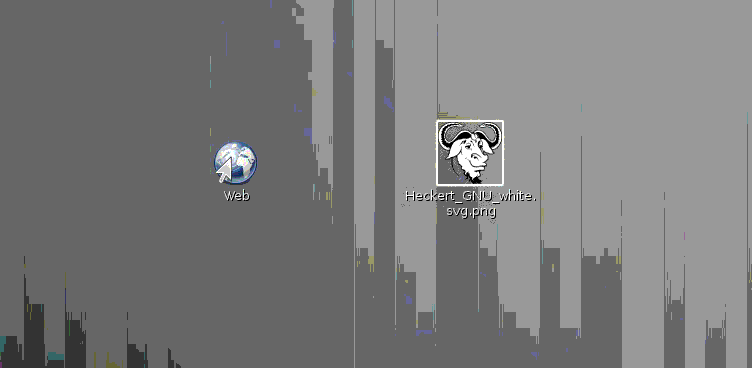|
PenPoint OS
The PenPoint OS was one of the earliest operating systems written specifically for graphical tablets and personal digital assistants. It was a product of GO Corporation. PenPoint OS ran on a number of Intel x86-powered tablet PCs including IBM's ThinkPad 700T series, NCR's 3125, 3130 and some of GRiD Systems' pen-based portables; it was later ported to the Hobbit chip in AT&T Corporation's EO Personal Communicator. PenPoint was never widely adopted. Developers of the PenPoint OS included Robert Carr, who was involved with the Alto computer at Xerox PARC. He commissioned Dr. Tinker, the naming service company of Mark Beaulieu who generated the name 'PenPoint', using proprietary algorithms. Awards and innovation Byte magazine awarded PenPoint best Operating System in the 1992 Byte Awards. PenPoint won in the Standards and Operating Systems category in PC Magazine's 1991 Technical Excellence awards. The PenPoint operating system had novel early implementations of several ... [...More Info...] [...Related Items...] OR: [Wikipedia] [Google] [Baidu] |
GO Corporation
GO Corporation was a company founded in 1987 to create pen-based portable computers, and a pen-based operating system and software. It was a pioneer of pen-based computing and was one of the most well-funded start-up companies of its time. Its founders were Jerry Kaplan, Robert Carr, and Kevin Doren. Mr. Kaplan subsequently chronicled the history of the company in his book ''Startup: A Silicon Valley Adventure''. Omid Kordestani, former Senior VP of Global Business at Google, began his startup career with GO Corporation. Other notable GO alumni include CEO Bill Campbell (who later became chairman of Intuit), VP Sales Stratton Sclavos (took VeriSign public as its CEO), CFO and VP of Business Operations Randy Komisar (became CEO of LucasArts), and VP Marketing Mike Homer (was VP Marketing at time of Netscape's IPO in 1995). History GO developed the PenPoint OS software, and an Intel 286-based lightweight "Go Computer" specifically for developers and evaluators; the compa ... [...More Info...] [...Related Items...] OR: [Wikipedia] [Google] [Baidu] |
Xerox PARC
Future Concepts division (formerly Palo Alto Research Center, PARC and Xerox PARC) is a research and development company in Palo Alto, California. It was founded in 1969 by Jacob E. "Jack" Goldman, chief scientist of Xerox Corporation, as a division of Xerox, tasked with creating computer technology-related products and hardware systems. Xerox PARC has been foundational to numerous revolutionary computer developments, including laser printing, Ethernet, the modern personal computer, graphical user interface (GUI) and desktop metaphor–paradigm, object-oriented programming, ubiquitous computing, electronic paper, amorphous silicon (a-Si) applications, the computer mouse, and very-large-scale integration (VLSI) for semiconductors. Unlike Xerox's existing research laboratory in Rochester, New York, which focused on refining and expanding the company's copier business, Goldman's "Advanced Scientific & Systems Laboratory" aimed to pioneer new technologies in advanced physics, mate ... [...More Info...] [...Related Items...] OR: [Wikipedia] [Google] [Baidu] |
Adobe Flash
Adobe Flash (formerly Macromedia Flash and FutureSplash) is a mostly discontinuedAlthough it is discontinued by Adobe Inc., for the Chinese market it is developed by Zhongcheng and for the international enterprise market it is developed by Harman International. multimedia software platform used for production of animations, rich internet applications, desktop applications, mobile apps, mobile games, and embedded web browser video players. About Flash displays text, vector graphics, and raster graphics to provide animations, video games, and applications. It allows streaming of audio and video, and can capture mouse, keyboard, microphone, and camera input. Artists may produce Flash graphics and animations using Adobe Animate (formerly known as Adobe Flash Professional). Software developers may produce applications and video games using Adobe Flash Builder, FlashDevelop, Flash Catalyst, or any text editor combined with the Apache Flex SDK. End users view Flash co ... [...More Info...] [...Related Items...] OR: [Wikipedia] [Google] [Baidu] |
FutureSplash Animator
Adobe Animate (formerly Adobe Flash Professional, Macromedia Flash, and FutureSplash Animator) is a multimedia authoring and computer animation program developed by Adobe. Animate is used to design vector graphics and animation for television series, online animation, websites, web applications, rich web applications, game development, commercials, and other interactive projects. The program also offers support for raster graphics, rich text, audio video embedding, and ActionScript 3.0 scripting. Animations may be published for HTML5, WebGL, Scalable Vector Graphics (SVG) animation and spritesheets, and legacy Flash Player (SWF) and Adobe AIR formats. The developed projects also extend to applications for Android, iOS, Windows Desktop and MacOS. It was first released in 1996 as ''FutureSplash Animator'', and then renamed ''Macromedia Flash'' upon its acquisition by Macromedia. It served as the main authoring environment for the Adobe Flash platform, vector-based software ... [...More Info...] [...Related Items...] OR: [Wikipedia] [Google] [Baidu] |
FutureWave Software
FutureWave Software, Inc. was a software development company based in San Diego, California. The company was co-founded by Charlie Jackson and Jonathan Gay on January 22, 1993. The VP of Marketing was Linda Michelle Alsip, who also came from Silicon Beach Software, then Aldus Corporation. Digital ArchaeologyPC Graphics & Video, Volume 6, Issues 1-6 Advanstar Communications, 1997Personal Computer Magazine PC Communications Corporation ... [...More Info...] [...Related Items...] OR: [Wikipedia] [Google] [Baidu] |
Windows Journal
Windows Journal is a notetaking application, created by Microsoft and included in Windows XP Tablet PC Edition as well as selected editions of Windows Vista and later. It was renewed in 2021 in Windows 11. Previous discontinued version from Windows 10 Previous versions allowed the user to create and organize handwritten notes and drawings, and to save them in a file, or export them in TIFF format. It can use an ordinary computer mouse to compose a handwritten note, as well as a graphics tablet or a Tablet PC. JNT format Microsoft has provided no documentation for its proprietary file format, which makes it difficult or impossible for other developers or software publishers to read or write files. Therefore, other programs cannot import Windows Journal files. There can be no third-party applications that make direct use of files created with Windows Journal. files should be converted to other formats such as XML with the Journal Reader Supplemental Component, for external ... [...More Info...] [...Related Items...] OR: [Wikipedia] [Google] [Baidu] |
GO Corp
GO Corporation was a company founded in 1987 to create pen-based portable computers, and a pen-based operating system and software. It was a pioneer of pen-based computing and was one of the most well-funded start-up companies of its time. Its founders were Jerry Kaplan, Robert Carr, and Kevin Doren. Mr. Kaplan subsequently chronicled the history of the company in his book ''Startup: A Silicon Valley Adventure''. Omid Kordestani, former Senior VP of Global Business at Google, began his startup career with GO Corporation. Other notable GO alumni include CEO Bill Campbell (who later became chairman of Intuit), VP Sales Stratton Sclavos (took VeriSign public as its CEO), CFO and VP of Business Operations Randy Komisar (became CEO of LucasArts), and VP Marketing Mike Homer (was VP Marketing at time of Netscape's IPO in 1995). History GO developed the PenPoint OS software, and an Intel 286-based lightweight "Go Computer" specifically for developers and evaluators; the company ... [...More Info...] [...Related Items...] OR: [Wikipedia] [Google] [Baidu] |
Address Book
An address book or a name and address book is a book, or a database used for storing entries, called contacts. Each contact entry usually consists of a few standard fields (for example: first name, last name, company name, address, telephone number, e-mail address, fax number, mobile phone number). Most such systems store the details in alphabetical order of people's names, although in paper-based address books entries can easily end up out of order as the owner inserts details of more individuals or as people move. Many address books use small ring binders that allow adding, removing, and shuffling of pages to make room. Little black book The 1953 film version of ''Kiss Me, Kate'' features a musical scene in which Howard Keel's character laments the loss of the social life he enjoyed before marriage, naming numerous female romantic encounters while perusing a miniature black book, which has given rise to the trope of a ''little black book'' referring to a list of past or potent ... [...More Info...] [...Related Items...] OR: [Wikipedia] [Google] [Baidu] |
Multics
Multics ("MULTiplexed Information and Computing Service") is an influential early time-sharing operating system based on the concept of a single-level memory.Dennis M. Ritchie, "The Evolution of the Unix Time-sharing System", Communications of the ACM, Vol. 17, 1984, pp. 365-375. It has been written that Multics "has influenced all modern operating systems since, from microcomputers to mainframes." Initial planning and development for Multics started in 1964, in Cambridge, Massachusetts. Originally it was a cooperative project led by MIT ( Project MAC with Fernando Corbató) along with General Electric and Bell Labs. It was developed on the GE 645 computer, which was specially designed for it; the first one was delivered to MIT in January 1967. GE offered their earlier 635 systems with the Dartmouth Time-Sharing System which they called "Mark I" and intended to offer the 645 with Multics as a larger successor. Bell withdrew from the project in 1969 as it became clear it would ... [...More Info...] [...Related Items...] OR: [Wikipedia] [Google] [Baidu] |
Windows For Pen Computing
Windows for Pen Computing is a software suite for Windows 3.1x, that Microsoft designed to incorporate pen computing capabilities into the Windows operating environment. Windows for Pen Computing was the second major pen computing platform for x86 tablet PCs; GO Corporation released their operating system, PenPoint OS, shortly before Microsoft published Windows for Pen Computing 1.0 in 1992. The software features of Windows for Pen Computing 1.0 includes an on-screen keyboard, a notepad program for writing with the stylus, and a program for training the system to respond accurately to the user's handwriting. Microsoft included Windows for Pen Computing 1.0 in the Windows SDK, and the operating environment was also bundled with compatible devices. Microsoft published Windows 95 in 1995, and later released Pen Services for Windows 95, also known as Windows for Pen Computing 2.0, for this new operating system. Windows XP Tablet PC Edition superseded Windows for Pen Computi ... [...More Info...] [...Related Items...] OR: [Wikipedia] [Google] [Baidu] |
Interface Metaphor
In user interface design, an interface metaphor is a set of user interface visuals, actions and procedures that exploit specific knowledge that users already have of other domains. The purpose of the interface metaphor is to give the user instantaneous knowledge about how to interact with the user interface. They are designed to be similar to physical entities but also have their own properties (e.g., desktop metaphor and web portals). They can be based on an activity, an object (skeuomorph), or a combination of both and work with users' familiar knowledge to help them understand 'the unfamiliar', and placed in the terms so the user may better understand. An example of an interface metaphor is the file and folder analogy for the file system of an operating system. Another example is the tree view representation of a file system, as in a file manager. Generation of metaphors Historical contributions In the mid-twentieth century, computers were extremely rare and used only by ... [...More Info...] [...Related Items...] OR: [Wikipedia] [Google] [Baidu] |
Drag And Drop
In computer graphical user interfaces, drag and drop is a pointing device gesture in which the user (computing), user selects a virtual object by "grabbing" it and dragging it to a different location or onto another virtual object. In general, it can be used to invoke many kinds of actions, or create various types of associations between two abstract objects. As a feature, drag-and-drop support is not found in all software, though it is sometimes a fast and easy-to-learn technique. However, it is not always clear to users that an item can be dragged and dropped, or what command is performed by the drag and drop, which can decrease usability. Actions The basic sequence involved in drag and drop is: * Move the pointer (computing WIMP), pointer to the object * Press, and hold down, the button on the computer mouse, mouse or other pointing device, to "grab" the object * "Drag" the object to the desired location by moving the pointer to this one * "Drop" the object by releasing th ... [...More Info...] [...Related Items...] OR: [Wikipedia] [Google] [Baidu] |



